
Supplier of vision system components
Components of machine vision technology
In order to build or enhance vision systems for industrial applications, it is crucial to have a comprehensive understanding of the different machine vision systems components involved and their functionality. Vision system components play integral roles in capturing, processing, and analyzing visual data to enable automation and quality control.
Cameras suited for specific applications
One of the key vision sensors components is the camera, which captures images or videos of the objects or processes to be inspected. This includes different types of cameras such as area scan cameras, line scan cameras, or thermal imaging cameras, each suited for specific applications.
Lenses relevance for image processing and analysis
Other essential vision sensors components include lenses, lighting systems, image processors, and software. Lenses focus the light from the object onto the camera sensor, while lighting systems provide adequate illumination for clear imaging. Image processors digitize and process the captured images, extracting relevant information for analysis, measurement, or classification.
Finally, software applications provide the interface for configuring and controlling the computer vision system, as well as performing advanced image processing algorithms and data analytics.
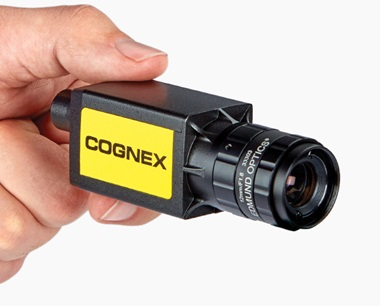
Machine vision systems Components in Automated Quality Control Processes
Vision system components play a crucial role in automating quality control processes in industrial settings. By integrating advanced machine vision system into the production line, manufacturers can ensure efficient and precise inspection and defect detection, leading to improved product quality and reduced operational costs.
Cameras
Cameras, as the primary input devices, capture high-resolution images or videos of the objects being inspected.
Lenses
Lenses help focus and adjust the view for optimal image clarity. Lighting systems provide consistent and appropriate illumination to ensure accurate imaging.
Image processors
Image processors process the captured visual data, applying various algorithms for analysis, measurement, and pattern recognition.
Software
The software acts as the brain of the system, enabling the configuration, control, and communication with other components.
Detect, verify and ensure
The integration of these machine vision system in automated precise control processes allows manufacturers to detect defects, verify product integrity, and ensure compliance with quality standards. Furthermore, advanced vision system components can automatically reject faulty products, thereby reducing the need for manual inspection and streamlining production lines.
The use of vision system technology measurement systems and vision sensors components in precise control and manufacturing processes leads to increased efficiency, improved product reliability, and enhanced customer satisfaction.
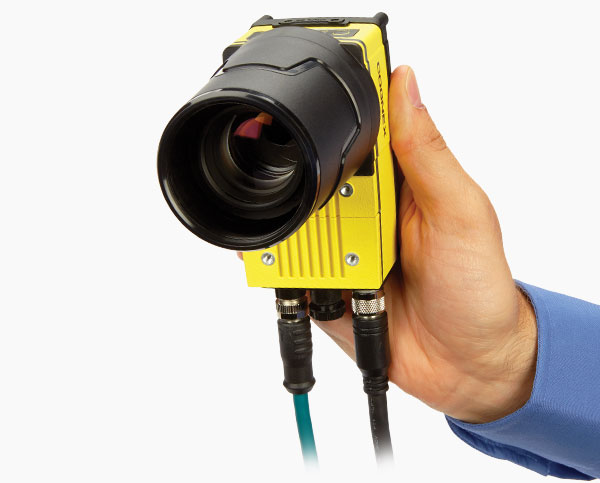
Types of machine vision components for industrial applications
In industrial applications, vision systems rely on a variety of machine vision system to operate effectively. One important component is the camera, which serves as the "eyes" of the system by capturing images or videos of the objects to be inspected.
There are different types of cameras used in vision systems. Each type has its own unique features and is suited for specific applications.
Area scan cameras
Area scan cameras capture an entire field of view in a single frame, making them ideal for general inspections.
Line scan cameras
Line scan cameras, on the other hand, capture images line-by-line, allowing for high-speed continuous inspection of moving objects, such as production lines.
Thermal imaging cameras
Thermal imaging cameras are used to measure temperature variations and identify anomalies that are not visible to the naked eye.
Lens
The lens focuses and directs the light from the object onto the camera sensor, ensuring that the captured images are sharp and clear. Different lenses with varying focal lengths and optical characteristics are used based on the specific requirements of the application.
Wide-angle lenses provide a broad field of view, ideal for capturing a large area, while telephoto lenses offer a narrower field of view but can capture distant objects with greater detail.
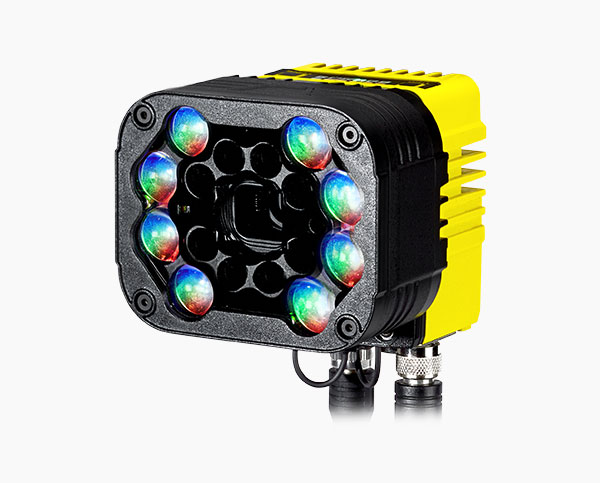
Understanding the role of cameras in vision systems
In vision systems, cameras play a central role in capturing visual data for inspection and analysis. The camera serves as the primary input device, capturing images or videos of objects or processes that are to be examined.
It collects visual information based on machine vision software on the system's requirements and sends it for further processing and analysis. Cameras in machine vision technology systems are designed to provide high-resolution images, ensuring accurate and detailed inspection.
The Heart of Camera Imaging Capabilities
The camera's sensor determines its imaging capabilities. Modern machine vision systems most often utilize charge-coupled device (CCD) or complementary metal-oxide-semiconductor (CMOS) sensors. CCD sensors are known for their high image quality, low noise levels, and excellent light sensitivity. CMOS sensors offer advantages such as lower power consumption and higher readout speeds, making them suitable as machine vision cameras for high-speed inspection applications.
Advanced Features and Integration
Vision system cameras may include various features such as adjustable exposure settings, autofocus, and advanced triggering options to optimize image capture. Some cameras support multiple interfaces, allowing for seamless integration with other system components.
The manufacturer and choice of camera depends on factors like resolution requirements, frame rate, lighting conditions, and application-specific needs.
Ultimately, cameras in machine vision systems enable the visual perception and analysis necessary for precise control, defect detection, robotics, and automation in industries. Their high-performance imaging capabilities and versatility make them indispensable machine vision components in the vision solutions for various industrial applications.
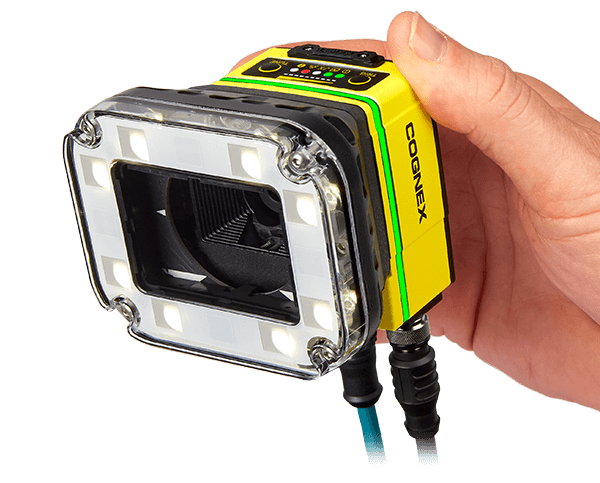
Importance of lenses in vision system performance
Lenses play a critical role in the overall performance of vision systems, as they directly impact the clarity, focus, and accuracy of captured images. The main purpose of a lens in a vision system is to focus incoming light onto the camera sensor, enabling clear and detailed imaging. Different lenses possess varying characteristics that make them suitable for specific applications.
Wide-Angle vs Telephoto in Vision Systems
For instance, a wide-angle lens provides a broader field of view, making it ideal for capturing a larger area in a single image. This type of lens is commonly used in surveillance systems or monitoring large manufacturing spaces.
On the other hand, a telephoto lens offers a narrow field of view but can zoom in on distant objects while maintaining image resolution. This is beneficial for applications like long-range optical inspection systems, machine vision or object recognition.
Lens Characteristics and Their Impact
In addition to field of view considerations, factors such as focal length, aperture, and lens precision also affect vision system performance. The focal length determines the amount of zoom or magnification achievable, while the aperture controls the amount of light passing through the lens. Optimal lens quality ensures sharpness, reduced distortion, and minimized aberrations, resulting in accurate and reliable imaging.
Selecting the right lens for a vision system entails understanding the specific requirements of the application, including object distance, the angle measurement required field of view, and desired level of detail. By choosing the appropriate lens for machine vision products, users can optimize image quality, ensure accurate measurements, and improve the overall performance of their machine vision products and systems.
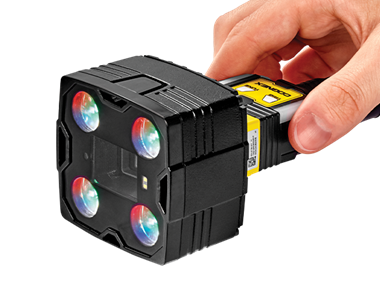
Lighting systems and their impact on vision system accuracy
Lighting systems play a vital role in machine vision systems, significantly influencing the accuracy and reliability of inspections. Proper illumination is crucial as it enhances the visibility of objects and facilitates accurate image analysis. In machine vision systems, controlled lighting eliminates shadows, reduces glare, and provides consistent illumination, ensuring optimal image for inspection purposes.
Direct vs. Diffuse Illumination
Different lighting techniques are employed based on the specific requirements of the application. Direct lighting involves illuminating the object being inspected directly from a single direction, resulting in clear and well-defined images. This technique is commonly used for measurements, defect detection, or surface inspection.
Diffuse lighting, on the other hand, involves evenly spreading light across the object, reducing shadows and providing uniform illumination. Diffuse lighting is beneficial for applications that require consistent lighting across the entire field of view, such as barcode reading or optical character recognition.
Importance of Lighting Color in Vision System Inspections
Choosing the right lighting color is another important consideration. The optimal lighting color can enhance specific features or differentiate objects, improving inspection accuracy. For instance, using infrared lighting can reveal features that are not visible to the human eye, enabling inspections in low-light or dark environments.
By implementing appropriate lighting systems in vision systems, users and companies can optimize image visibility, reduce measurement errors, and improve defect detection capabilities. Well-designed lighting ensures consistent and accurate inspection results, enhancing the overall performance of the vision inspection system itself. Those machine vision solutions offers embedded vision systems with smart cameras great for manufacturing company that needs robotic systems equipment able to process image processing with pattern recognition. Those code reading needs to have maximum flexibility in any application requirements such as inspection, automation, processing and be integrated quickly with easy connection.
Get in touch
Fill out the form below to get in touch with our team.